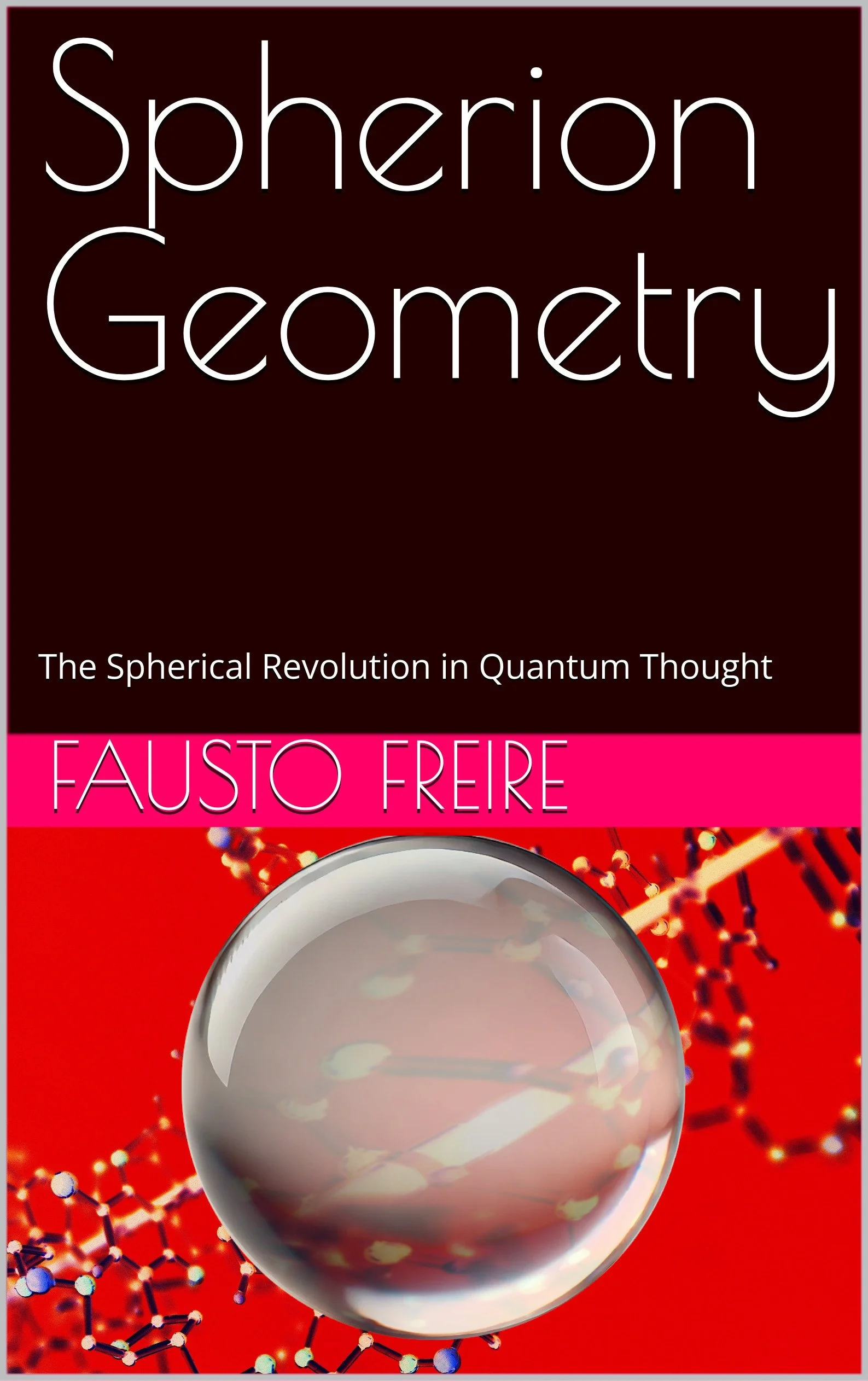
Spherion: Geometry & Algebra
What is Spherion?
Spherion Geometry
Spherion (𝕊) is a new geometric approach and conceptual computational framework that does not fit neatly into any existing mathematical or physical category. However, we can accurately situate it in terms of disciplines, operations, and the type of mathematical object it most closely resembles. The primary operation involves recursively defining and overlapping subdivisions of spherical space into zones of increasing resolution, along with probabilistic associations among the zones that involve uncertainty. On this site, I will elaborate further on this topic, presenting ideas regarding Spherion to both professionals and laypeople. Spherion was created and developed by Favst McFrey (Fausto Machado Freire).
Spherion Algebra
Spherion Algebra (𝕊ₐ) is the formal language behind Spherion geometry, with rules that depart from Euclidean arithmetic. Instead of numbers, 𝕊ₐ manipulates nested zone codes that subdivide a sphere and overlap like 3-D Venn diagrams. Its core moves—fan-out, collapse, weigh—recursively split or fuse zones while attaching a probability. The resulting idempotent lattice treats union as addition, intersection as multiplication, and propagates uncertainty by simple coefficients. On this site I’ll unpack these ideas for experts and newcomers, showing how 𝕊ₐ can replace π, square roots, and decimals with discrete rotation-equivariant tokens. Spherion Algebra was created by Favst McFrey (Fausto Machado Freire).
Docs Geometry and Algebra Spherion
Spherion Geometry: The Spherical Revolution in Quantum Thought (English Edition) eBook Kindle
The present volume, Spherion Geometry, follows logically and conceptually from the preceding work, Spherion Algebra, which provided the algebraic foundation necessary to reinterpret spatial relationships through hierarchical spherical structures rather than traditional linear coordinates. By introducing an entirely new algebraic framework, Spherion Algebra demonstrated how spatial precision and uncertainty can coexist naturally within infinite, recursively nested spherical zones.
Spherion Geometry follows naturally from Spherion Algebra, which laid the essential algebraic groundwork for understanding spherical forms through hierarchical relationships. The previous book introduced readers to a groundbreaking algebraic structure, demonstrating how spatial information can be represented by endlessly nested spherical zones. This algebraic innovation provides a robust mathematical framework that enables precise yet intuitive management of uncertainty, ambiguity, and resolution in spherical spaces.
This geometric volume extends these principles by explicitly exploring their implications for spatial reasoning and structural representation. Unlike previous attempts at non-Euclidean geometry—most notably hyperbolic geometry developed independently by Nikolai Lobachevsky and János Bolyai around 1820—Spherion Geometry is not merely an adjustment or rejection of Euclid's fifth postulate regarding parallel lines. Hyperbolic geometry, despite its innovative approach to parallelism, remained fundamentally anchored to other Euclidean concepts such as angles, triangles, and trigonometric relations.
In contrast, Spherion Geometry marks the first thorough and systematic departure from the entire Euclidean tradition over the past two
thousand years. Instead of simply adjusting one axiom among many, it redefines geometric intuition itself by exclusively basing spatial relations on inherently spherical properties and hierarchical subdivision, without referencing classical Euclidean concepts.
Together, Spherion Algebra and Spherion Geometry provide a complete paradigm shift. They open unprecedented avenues for applications in quantum physics, artificial intelligence, computational spatial systems, and other domains where hierarchical precision and intrinsic curvature are essential.
Building directly upon these algebraic foundations, Spherion Geometry explores the spatial and geometric implications of these new principles. Freed from the limitations of planar abstraction and traditional angular approximations, Spherion Geometry establishes a self-consistent, intrinsically spherical method for conceptualizing and analyzing spatial relationships, distance, and curvature.
Throughout history, spheres have symbolized unity, perfection, and natural harmony—ideas often obscured by classical geometric formalisms. By revisiting these fundamental concepts through the lens of Spherion Algebra, this work aims not merely at mathematical novelty but at reconnecting mathematical theory with the intuitive, spherical essence of reality.
Human thought has long envisioned spheres as symbols of unity, completeness, and natural perfection. Ancient observers perceived celestial objects as inherently spherical, linking them to metaphysical ideals of symmetry and divinity. Yet historically, geometric reasoning shifted toward planar abstraction, losing touch with the intuitive spherical form ubiquitous in nature.
Kindle Version
Book Version
“Spherion Algebra” introduces a new formal language for reasoning about space, uncertainty, and computation on the sphere. Instead of using coordinates or decimal numbers, it encodes location as a sequence of nested zones—discrete tokens that divide the sphere into hierarchically arranged regions.
This algebra defines operations such as fan-out, collapse, and weigh, which expand, merge, or assign probabilistic weights to zones.
These operations create an idempotent lattice where:
• Union functions like addition,
• Intersection functions like multiplication,
• and uncertainty naturally propagates across levels.
Spherion Algebra offers a rigorous theoretical base and computational framework applicable to geospatial, probabilistic systems, and uncertainty modeling. Its combination of recursive subdivisions—defined by complex zone codes—and probabilistic links provides deep insights into spherical geometry.
Instead of using π, square roots, or continuous functions, Spherion Algebra constructs spatial models with finite symbolic precision. The system maintains rotational symmetry and handles ambiguity naturally. Based on geometric intuition but designed for modern computation, Spherion Algebra offers a new toolkit for spatial databases, probabilistic inference, and AI in curved space.
Contact Us
Are you interested in collaborating with us on developing spherion geometry and algebra? Fill out the form with your details, and we will reach out to you soon. We look forward to talking with you.




